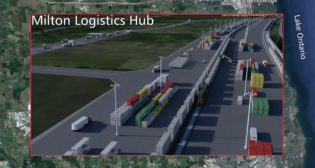
Is Bakken CBR fading away?
Written by William C. Vantuono, Editor-in-ChiefBakken crude oil hauled in unit trains may disappear by 2017, according to an analysis conducted by RBN Energy LLC.
“Bakken crude-by-rail (CBR) volumes are down this year and pipeline shipments are increasing as production levels off in the wake of last year’s price crash,” says RBN’s Rusty Braziel. “The trend is encouraged by lower price differentials between domestic and international crude as well as new pipelines coming online. Since 2012 a combination of rail and pipeline has given Bakken producers ample crude takeaway capacity but pipelines alone have not had sufficient capacity on their own. However, with production slowing down, pipeline capacity is catching up, and by 2017 there should be enough pipelines to carry all North Dakota’s crude to market.”
RBN Director Energy Analytics Sandy Fielden, in the first installment of a two-part editorial, “The End of The Line – Could Bakken Crude-by-Rail Shipments Disappear?,” examines whether pipelines can replace CBR from North Dakota.
“As long as the price differentials between discounted domestic crude stranded in the Midwest and coastal crude priced at higher international prices stayed wide enough, rail was an ideal option for Bakken producers, especially to the East and West Coasts where there is no pipeline capacity,” Fielden writes. “As soon as price differentials—especially between domestic benchmark West Texas Intermediate (WTI) and international benchmark Brent—narrowed, then barrels shifted back to pipelines to take advantage of their cheaper tariff rates. Yet significant crude volumes continued to be transported to market from North Dakota by rail because pipeline capacity could not handle the demand. More recently, we have described the planning and buildout of a series of new pipelines out of North Dakota that (if they are all built) should increase capacity enough to provide space for all the barrels currently traveling to market from North Dakota by rail.”
 The top chart shows the changing balance between rail (blue line) and pipeline (red line) percentages of crude carried out of the Williston Basin since February 2012 (against the left axis). The data is from the North Dakota Pipeline Authority (NDPA) that publishes monthly estimates of the balance between crude takeaway modes in percentage terms, based on crude production from the Williston Basin as a whole. Fielden also included the monthly Williston Basin production history as a reference (grey shaded area against the right axis) that comes from the Energy Information Administration’s (EIA) Drilling Productivity Report.
The top chart shows the changing balance between rail (blue line) and pipeline (red line) percentages of crude carried out of the Williston Basin since February 2012 (against the left axis). The data is from the North Dakota Pipeline Authority (NDPA) that publishes monthly estimates of the balance between crude takeaway modes in percentage terms, based on crude production from the Williston Basin as a whole. Fielden also included the monthly Williston Basin production history as a reference (grey shaded area against the right axis) that comes from the Energy Information Administration’s (EIA) Drilling Productivity Report.
The bottom chart is RBN’s latest update to its summary of Bakken transport options that shows actual and forecast crude production and transportation capacity out to 2020. The crude production data is the shaded area, with the light blue representing monthly actuals from the NDPA and the purple and blue representing RBN’s latest growth (blue) and contraction (pink) scenarios. The red line is the combination of pipelines plus local refinery capacity in North Dakota, and the green line represents rail capacity shown stacked on top of the red line.
“You can see that production exceeded pipeline capacity in 2012 but that the combination of rail and pipeline capacity has been high enough to cover shipper’s needs (assuming it is all online and congestion free)” writes Fielden. “The pertinent point on the chart . . . is where the red pipeline capacity line crosses crude oil production—sometime in 2017 (black dashed circle). That is the point where—in theory—all Bakken production could be transported to market by pipeline, potentially leaving North Dakota rail terminals deserted.”
According to this analysis, new pipeline projects due online at the end of 2016 and during 2017 will expand Bakken takeaway pipeline capacity by 680,000 barrels per day. Another 100,000 barrels per day of pipeline capacity out of the Bakken will come in 2019 if the TransCanada Keystone XL pipeline is completed, with 220,000 barrels per day more in 2020 if the TransCanada Energy East project is built.
“However—and here’s the complicated part—just because pipeline capacity is available doesn’t necessarily mean producers will prefer to use that capacity instead of rail,” Fielden notes. “In the long run, assuming that they do not have other overriding obligations, shippers will look to their crude netbacks at the wellhead to decide where and how to send their crude to market. That means they should favor market locations where the combination of crude sales price less transport is the highest—regardless of transport mode.
To read Fielden’s full analysis, click HERE.



